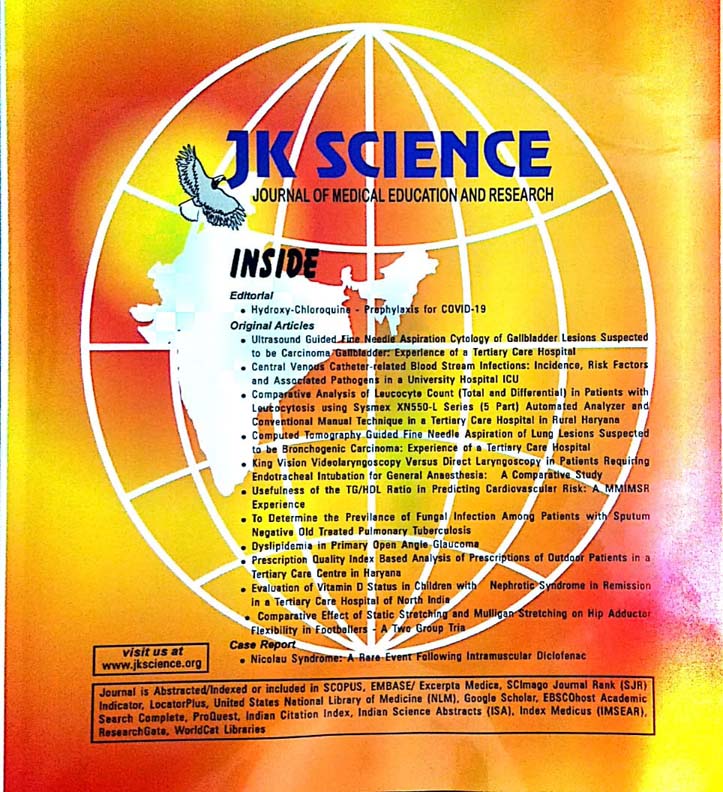A Study of Serum C3 and C4 Levels in Burn Patients: Possible Prognostic Markers?
Keywords:
Complement system, Burns, C3, C4Abstract
Background: Burns are a public health problem across the world and a major burden on health care resources. Identifying major burns including those more likely to develop sepsis will help a lot in their management.
Purpose: This study was undertaken to assess the changes in complement levels in burns and their possibility of acting as a marker for severe and complicated burns.
Material and Methods: This was a prospective case control study. Sixty burn patients were enrolled in the study. Their serum C3 and C4 levels were assessed at the time of presentation and at 10 days later. Fifty healthy subjects were enrolled as controls and their C3 and C4 levels were assessed.
Results: The age group of patients was 3 to 63 years. There were 47 male patients and 13 female patients. There was a significant decrease in mean post treatment levels of serum C3 (141.82 ± 78.07 mg/dl) and C4 (25.09 ± 11.22 mg/dl) as compared to pre-treatment levels of C3 (188.22 ± 92.35 mg/dl) and C4 (46.49 ± 15.22 mg/dl) in the burn patients. The fall was more in patients with major burns.
Conclusion: There are changes in serum complement component levels in burn patients which have the potential of being prognostic markers. The role of complement system on the overall pathophysiology of burn patients also needs to be studied more extensively.
Downloads
Downloads
Published
How to Cite
Issue
Section
License
Copyright (c) 2021 JK Science: Journal of Medical Education & Research

This work is licensed under a Creative Commons Attribution-NonCommercial-ShareAlike 4.0 International License.





